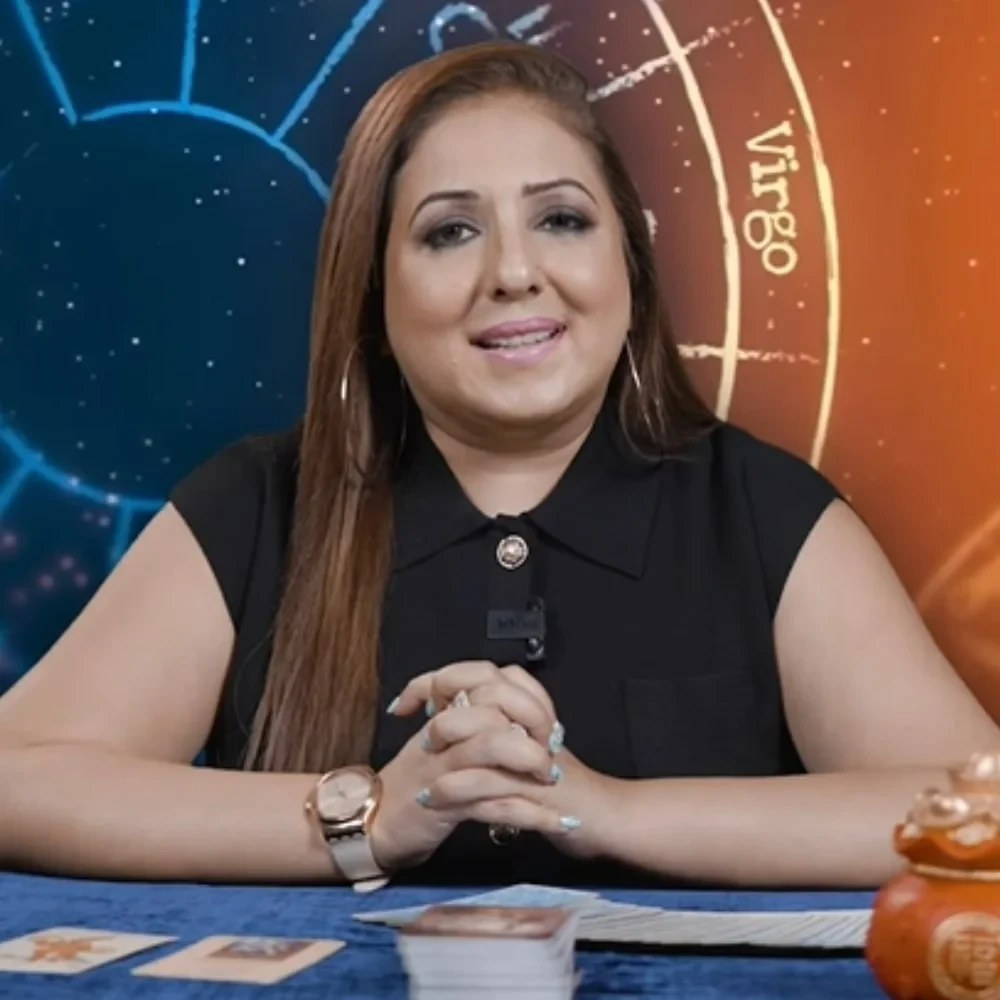Limerence Vs. Love: Understanding Passionate Emotions
Discover the profound differences between Limerence vs Love. Explore their unique signs and how they impact relationships in this insightful comparison.

Imagine encountering someone who embodies your deepest desire in a partner, creating an electrifying connection that sets your heart aflutter with every encounter. They seem almost too perfect, as if destiny has crafted them just for you. However, amid these intense emotions, you face a critical choice: distinguishing between limerence and love. It becomes imperative to establish the precise boundary between these two experiences.
Join us on an enthralling journey as we explore the intricate terrain of limerence within a relationship. To commence, let’s delve into the essence of understanding what it means and how we can define this intriguing phenomenon in the context of romantic connections. This journey begins with a powerful observation by Mackenzie, who aptly captures the essence of limerence when she says, “Limerence is the feeling that the object of their desire will complete them,” says Mackenzie. Throughout this exploration, we’ll unveil its unmistakable signs and equip you with the insights to differentiate it from authentic love.
What Is Limerence?
Limerence is like a rollercoaster of intense longing and deep obsession, where thoughts of that special someone consume your every waking moment. An insatiable attraction and an overwhelming desire for emotional reciprocation mark this emotional journey. It's as if you've forged a deep connection with this person, and you're willing to go to great lengths to win their affection.
However, it's crucial to remember that limerence is not synonymous with love. It's a phase of romantic infatuation, a captivating yet temporary state of mind. This whirlwind can leave you on cloud nine, basking in the glow of mutual connection, or cast you into the depths of heart-wrenching despair if your feelings go unrequited.
In the grand narrative of love, limerence is the electrifying overture—a burst of fireworks that precedes the warm, comforting glow of genuine affection. So, brace yourself for this emotional rollercoaster because limerence is one wild ride that can leave you spellbound.

8 Signs of Limerence to Recognize in a Relationship
1. The Illusion of Idealization
The duration of limerence, or "how long does limerence last?" can vary significantly from person to person. Limerence often begins with a lack of clarity about who the object of affection truly is. It's like crafting a story with selective traits and experiences, shaping them into a bigger, idealized narrative. However, this limited view can hinder authentic connection. Genuine relationships involve understanding each other's baggage, pain points, and flaws. Without this vulnerability, the true connection remains shallow, lacking depth and authenticity. It's essential to recognize that the version of the person we've constructed in our minds during limerence is often a glorified fantasy designed to fulfill our unmet needs.
2. Obsessive Thought Patterns
When limerence strikes, thoughts of the person become all-consuming, infiltrating every aspect of everyday life. Even the briefest, seemingly inconsequential interactions are replayed endlessly, and a future together is imagined, even without a real relationship. Unlike genuine relationships, which encompass a range of emotions and experiences, limerence feels like a one-note romantic comedy, lacking depth and diversity.

3. Life on Hold
Limerence can lead to deprioritizing real life in favor of the imagined relationship. Friends might notice your absence, work starts to suffer as you rush to be with your crush, and your hobbies gather dust. The obsession with your limited object can erode other relationships and responsibilities. In contrast, genuine love enhances your entire life, whereas limerence engulfs it, leaving room for nothing else but your fixation.
4. Emotional Dependency
Emotional dependence on the slightest reaction from the limerent object is a hallmark of limerence. An intense yearning for their reciprocation can lead to anxiety and mood swings. You might interpret their actions and cues exaggeratedly, swinging between euphoria and depression. Boundaries may blur as you personalize their efforts, filtering them through fear of abandonment.

5. Validation Hunger
The distinction between infatuation and love is crucial. In infatuation, there's often a desperate need for validation, and you tend to see the person you're fascinated with black-and-white terms, fixating on their approval. Your emotional balance can easily be disrupted if they don't respond as you hope. As Depanian points out, limerence is primarily a craving for reciprocity, resulting in a one-sided relationship.
On the other hand, genuine love involves accepting each other's flaws and virtues and loving the whole person. It's essential to recognize that these intense feelings don't necessarily make the person uniquely special, but they may reveal a new aspect of yourself that they've awakened. Instead of chasing fleeting, sparkly emotions, exploring their stories, interests, and dreams can be more rewarding in the long run.
6. Fear of Rejection
The fear of rejection is a significant component of limerence. This fear can be paralyzing, preventing you from expressing your feelings or pursuing a relationship with the person. You may worry excessively about how they perceive you and fear that any sign of disinterest will lead to emotional devastation.

7. Physical Symptoms
The physical symptoms of limerence can be pronounced. When you're near an object of limerence , you may experience physical reactions such as an increased heart rate, sweating, blushing, or nervousness. These symptoms are often a result of the heightened emotional state associated with limerence.
8. Anxiety And Self-consciousness
Distinguishing between limerence and love often hinges on the emotional dimensions of anxiety and self-consciousness. In limerence, anxiety prevails, fueled by the fear of rejection and an insatiable need for reassurance from the object of affection. This anxiety amplifies self-consciousness as limerent individuals meticulously scrutinize their actions and appearance to secure approval. Conversely, love, while not entirely free of occasional stress and self-awareness, tends to foster a more profound sense of security and acceptance within a relationship, creating a more harmonious emotional landscape.
Limerence vs. Love Similarities

- Intense Emotions: Both limerence and love involve intense emotional experiences. In both cases, individuals may feel happiness, excitement, and a strong desire to be with the person who is the object of their affection.
- Physical Sensations: People experiencing limerence and love often report physical sensations, such as butterflies in the stomach, increased heart rate, and a sense of euphoria when thinking about the person they're attracted to.
- Focus on the Other Person: Whether it's limerence or love, individuals tend to think about the object of their affection frequently. They may daydream about the person, replay past interactions, and eagerly anticipate future encounters.
- Desire for Connection: Both limerence and love involve a deep desire for emotional and physical connection with the person they're attracted to. Individuals in both states often prioritize spending time with the object of their affection.

5. Idealization: People in limerence and love often idealize the person they're attracted to, seeing them through rose-colored glasses and focusing on their positive qualities while overlooking flaws.
6. Motivation for Action: Limerence and love can be powerful motivators. They can inspire individuals to pursue the person they're attracted to, try to impress them, and engage in romantic gestures to win their affection.
7. Emotional Vulnerability: In both limerence and love, individuals may experience emotional vulnerability. They may feel a deep sense of attachment and fear the possibility of rejection or loss.
8. Longing And Obsession: Both limerence and love can lead to feelings of longing and obsession. Individuals may yearn for the presence of the person they desire and may find it challenging to focus on other aspects of their life.

Limerence vs. Love Differences
1. Onset And Duration
Limerence often emerges suddenly and intensely, resembling the initial stages of love. However, it is typically short-lived, lasting from a few weeks to a few months. It can feel like an all-encompassing infatuation marked by a swift and decisive emotional takeover. On the other hand, love tends to develop more gradually over time, growing deeper and more enduring as the relationship matures. While the intensity of love may ebb and flow, it has the potential to last a lifetime, evolving into a deep and abiding emotional connection.
2. Idealization
In the throes of limerence, the object of affection is often idealized to an extreme degree. Their flaws are overlooked or rationalized, and they are seen as nearly perfect. This idealization can create an unrealistic image of the person, making it challenging to see them as they are. Love, in contrast, acknowledges imperfections but embraces them as part of what makes the individual unique and lovable. Love accepts the entirety of a person, flaws and all, and cherishes them for their authentic self.

3. Emotional Intensity
Extreme emotional highs and lows mark limerence. Positive interactions with the limerent object can lead to euphoria, while perceived signs of rejection can result in profound sadness or anxiety. These emotional fluctuations are intense and can be overwhelming. Love, on the other hand, tends to offer a more stable and consistent emotional experience. While there are emotional ups and downs in any relationship, love does not typically produce the extreme mood swings associated with limerence.
4. Dependency
Limerence often leads to emotional dependency on the limerent object. The person experiencing limerence may feel incomplete without the other person, believing they need them to fill a void. Love, in contrast, encourages interdependence—a healthy balance where both partners maintain their identities and well-being while enriching each other's lives. It is not characterized by an all-consuming need for the other person to complete them.

5. Focus on Reciprocation
Within the realm of limerence, there is an intense desire for the person of interest to reciprocate the feelings. Happiness in limerence can excessively depend on the other person's response, and even minor actions or words may be interpreted as signs of interest. Love, however, seeks mutual respect and care but does not hinge on a constant need for validation or reciprocation. It is more concerned with the well-being and happiness of the loved one.
6. Duration of Obsession
Limerence often leads to obsessive thoughts about the limerent object, which can be all-consuming and interfere with daily life. These obsessions tend to decrease as limerence fades. In contrast, while love can also lead to preoccupation with the loved one, it tends to be less intrusive and allows for a healthier balance between the relationship and other aspects of life.

7. Long-term Prospects
Limerence, despite its intensity, does not typically provide a stable foundation for a long-term, committed relationship. While it may lead to a brief and passionate romantic connection, it is unlikely to sustain a lasting partnership. Love, especially when combined with commitment and mutual respect, has the potential to build and maintain a robust and enduring relationship that withstands the test of time.
Different Stages of Limerence
1. Infatuation: The initial limerence stage parallels the "falling in love" stage in a relationship. It is characterized by a flood of chemicals heightening feelings about the person, often leading to overlooking red flags and being more focused on maintaining the high rather than discernment.
2. Crystallization: In this stage, limerence intensifies as you attempt to maintain the initial high. Red flags are rationalized away, and there's a strong desire to prolong the honeymoon phase.
3. Deterioration: Unlike healthy relationships progressing to commitment and loyalty, limerence enters the deterioration phase. Interest wanes as the illusion fades, often ending in disappointment and frustration.

Can Limerence Ever Turn into Love?
Limerence, that captivating and intense infatuation, has the potential to evolve into genuine love, although it's not a guaranteed transition. Limerence often serves as the initial spark, igniting a passionate connection between two people. However, for it to transform into lasting love, several factors come into play.
Over time, the overwhelming feelings of limerence can gradually settle into a more profound and enduring emotional connection. As you spend more time with the person who initially triggered your limerence, you understand them beyond the idealized image you originally had. This realistic perspective can serve as the foundation upon which to be loved can grow.
Crucially, mutual feelings play a pivotal role in this transition. If the person you're fascinated with reciprocates your emotions, it can pave the way for a genuine romantic bond to develop. Emotional intimacy, trust, and mutual respect are vital ingredients that facilitate the transformation from infatuation to love.
Shared experiences also contribute significantly to this process. As you and your partner build a history of shared moments, including both joyous and challenging ones, your connection deepens. Overcoming obstacles together and supporting each other's personal growth can strengthen the emotional ties that underpin love.
Furthermore, emotional maturity often accompanies the journey from limerence to love. Navigating the highs and lows of a relationship can lead to a profound understanding of love's complexities. This deeper comprehension of love encompasses compassion, empathy, and commitment.
While limerence can evolve into love under the right circumstances, it's essential to acknowledge that not all limerent relationships follow this path. In some cases, limerence may wane, or it may reveal fundamental incompatibilities that hinder the development of a lasting connection. In such instances, recognizing when it's best to move on and seek healthier, more fulfilling relationships is crucial for personal growth and happiness.

When it Becomes Unhealthy
When limerence turns towards the unhealthy, it can become an emotional roller coaster marked by acute longing and an anxious attachment. This distressing phase often arises when limerent feelings persist despite genuine connection or remain unreciprocated within a current relationship. It's a mental state that can profoundly impact a person's mental health, potentially giving rise to mental health issues such as anxiety and depression.
In its darker moments, unhealthy limerence can exhibit positive characteristics through intrusive and unsettling behaviors. Individuals may become fixated on the object of limerence, engaging in constant surveillance or unwanted communication. Such actions not only harm their well-being but also create discomfort and distress for the other party involved.
This distressing concept of limerence can hinder personal growth and the pursuit of healthy relationships with others. It's a stark departure from the more positive aspects of limerence, where mutual feelings and a genuine connection can make a person happy. Therefore, it's essential to recognize the symptoms of limerence and seek help from a mental health professional when necessary to navigate the complexities of this intense emotional state.
Conclusion
In the intricate dance of human emotions, the allure of limerence vs. love can be captivating, akin to a beautifully scripted love story unfolding before our eyes. Yet, beneath its surface charm lies a potential pitfall—a tendency to veer into shallowness and emotional immaturity rather than blossoming into genuine love. To navigate the labyrinth of our emotions effectively, it's essential to balance the enchantment of infatuation and the rationality of reality.
When entangled in the throes of limerence, pausing to infuse logic into our feelings can be transformative. It allows us to break free from unhealthy patterns and illusions, permitting us to view our partner more authentically. Instead of seeking someone to fill a void within us, we can strive for a relationship where our partner complements us, creating a profound connection that is both enduring and fulfilling. This love story transcends the fleeting allure of limerence and stands the test of time.
ALSO READ: 15 Differences Between Love And Being in Love: Cracking the Code
Love Isn’t Enough in Relationships: Understanding What Matters Beyond Love
Communication in Relationships: Unlocking the Path to Healthy Connections





 JOIN OUR WHATSAPP CHANNEL
JOIN OUR WHATSAPP CHANNEL






































































